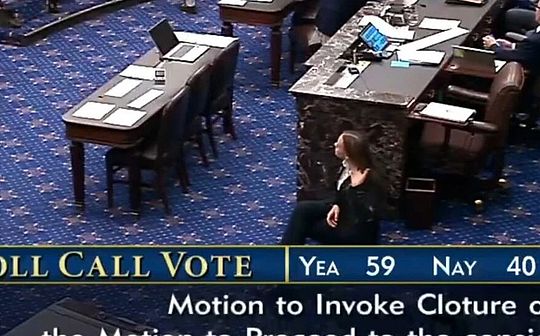
Editor’s note: There are new developments in the U.S. government shutdown early this morning. We have updated 4 related questions.
1. What is the latest development of the government shutdown?
On the evening of November 9th, Eastern Time, with the support of at least eight Democrats, the Senate passed its revised temporary appropriations bill.(CR) conducted a procedural vote (Cloture vote, which will end the lengthy debate after passing) and has basically obtained the required 60 votes., can enter the voting session of the whole hospital.
2. What is the future timeline?
1) The Senate is expected to hold a full house vote on the CR on Monday (November 10).Since only a simple majority (51 votes) is needed to pass, it is certain to pass.
2) Since the Senate’s CR is modified from the House version, it needs to be sent back to the House of Representatives for another vote. It is expected that the House of Representatives may complete the vote from Tuesday to Wednesday.
3) After being passed by the House of Representatives, it will be sent to Trump for signature.The government shutdown is expected to end as soon as mid-week.
3. What does the current Senate version of CR include?What compromises did the two parties make?
The Senate version of the CR consists of two parts: one long and one short.
1) Provide “short-term funding” to most government departments until January 30, 2026.The appropriations bill would then need to be negotiated again.
2) Provide “long-term funding” for the three categories of departments that will last for one fiscal year until the end of fiscal year 2026 (i.e. September 30).Relevant agencies include the Departments of Agriculture and Food and Drug Administration (FDA), the Department of Veterans Affairs and Military Construction, as well as Congress and supporting agencies.Since Food Stamps (SNAP) is a welfare program under the Department of Agriculture, SNAP funds that were discontinued on November 1 will also be extended until the end of September 2026.
Concessions from Senate Republicans:The first is to agree to vote in mid-December on the extension of subsidies related to the Obamacare (ACA) bill that Democrats have been demanding, and let the Democrats choose the specific form of the bill.However, it should be noted that this is only a promise to vote, not a guarantee of passage.The second is to agree to completely revoke the Trump administration’s mass layoff notices to federal employees during the shutdown and ensure that all federal workers receive full compensation during the shutdown, although the latter is part of the standard shutdown end agreement.
Concessions made by Senate Democrats:It gave up the demand to directly add the extension of medical insurance subsidies to CR and agreed to postpone the vote until December.Since the Democratic Party needs 60 votes to pass in the December vote, it can be considered that the ACA subsidy extension has a high probability of being difficult to pass..
It can be seen from the compromise content of both parties and the opposition of Schumer and Jeffries, the minority leaders of the House and Senate, thatThe Republicans retained a “relatively clean” CR, while the Democrats made more substantial concessions in the agreement.
4. How will non-agricultural and CPI data be released after the government reopens its doors?
At present, the non-agricultural data for September and October have not been released. Samples have been collected in September but not collected at all in October due to the government shutdown and BLS holiday.At present, there is a high probability that September’s non-agricultural data will be released at the end of November or December, but there is uncertainty about whether October’s data will be released.The BLS may ask survey participants to “recall” the employment situation in the 12 weeks of October, but the data quality will be affected; or it may skip the non-farm payrolls in October and only publish the employment data in September and November.
In terms of CPI, September’s CPI was announced on October 24.Because about two-thirds of CPI data rely on field collection, and these tasks completely stopped during the shutdown,Therefore, October’s CPI data may need to use alternative estimation methods to fill in missing data (affecting data quality) or cancel the publication directly..





